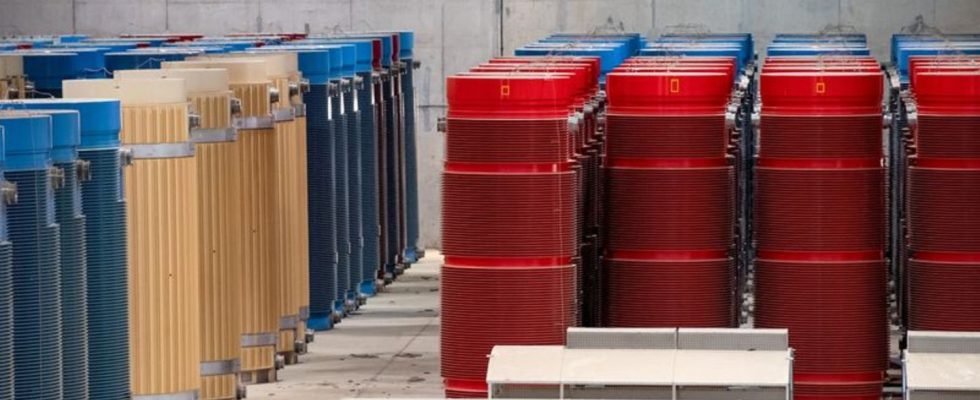radioactive waste
BUND study criticizes the safety of the nuclear waste interim storage facility
Containers with high-level radioactive waste and transport hoods in Gorleben. photo
© Sina Schuldt/dpa
All nuclear power plants in Germany are idle. The question of how to store the rubbish remains unresolved. A quick solution is not in sight.
A study has criticized the safety of Germany’s interim storage facilities for high-level radioactive waste. “The current safeguarding and safety of the interim storage facilities for high-level radioactive waste in Germany is in some cases highly problematic,” says the study commissioned by the Federal Government for Environmental Protection and Nature Conservation (BUND).
One problem: The warehouses will probably have to be operated much longer than originally planned. The BUND therefore calls for a “solid, Germany-wide security concept”. In Lower Saxony alone, four locations are affected by the criticism.
“The interim storage facilities are gradually becoming long-term storage facilities and are not designed for this at all,” said BUND chairman Olaf Bandt. Improvements are needed in terms of security. In the interim storage facilities, the aging of the cask material must be given greater consideration. Actually, the storage in the transport containers is limited to 40 years.
120 years
In her study, the physicist Oda Becker calculates that the approval for many interim storage facilities will expire in the foreseeable future. However, it could take another 120 years for a repository to go into operation, she writes, referring to the Federal Waste Management Commission.
“Safety is guaranteed in all BGZ interim storage facilities,” emphasized the Federal Agency for Interim Storage in a statement. “In around 30 years of operation of the interim storage facility, no faults have occurred that would have posed a threat to people or the environment.” The concept is so robust that the BGZ always has enough time to implement measures to maintain safety.
In Gorleben in Lower Saxony, in the four-country corner with Mecklenburg-Western Pomerania, Brandenburg and Saxony-Anhalt, the repository was once planned in a former mine. 113 of the 240 transport containers with highly radioactive material in Lower Saxony are currently stored in a hall there. The other locations in the federal state are at the decommissioned nuclear power plants Lingen in Emsland, Grohnde near Hameln and Unterweser south of Bremerhaven. There are 16 interim storage facilities nationwide. According to the study, they are approved until 2047 at the longest, and two are currently being operated without approval.

